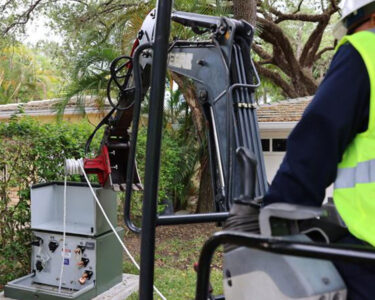Most people are under the assumption that a flood only happens during a tropical storm or a hurricane. New buyers of property sigh with relief when they hear their property is in the “X” zone on the flood map and not required for closing. What most people fail to realize is that your homeowners insurance does not cover flood and a flood event can hit at any moment.
Tropical Storm Imelda was a mild tropical storm that hit the Texas coast on September 17, 2019 as a minor weather event, but caused 43 inches of rain. The national Flood Insurance Program (NFIP) paid out $738 million on 11,000 claims. According to an NFIP spokesman, that is close to the amount paid on 16,000 claims from Hurricane Florence, a category 1 Storm that hit the coast of North Carolina in September of 2018.
The numbers are staggering. In 2019, a relatively quite year for flooding, the NFIP still paid out $1.47 billion on 35,000 claims. As early as June of 2020, the NFIP received 3,143 claims with a payout to policyholders of close to $44 million.
Of the more than 200,000 homes that were damaged during Hurricane Harvey, three-quarters did not have flood coverage, leaving people waiting on help from the Red Cross or abandoning their homes completely. Although, again, it doesn’t always take a named storm to cause a flood.
Heavy rains, dam failures, excessive property development like we are seeing in South Florida, and even construction projects change the water drainage routes that can result in widespread flooding.
“We’ve altered the landscape of mother nature. Whether it is a commercial project, marine boats moored in the marina, nothing creates more damage and property loss than flood,” states Maria Lemorane, a conservationist with The Save Miami Project.
No matter what property you own, flood is not covered under any homeowners or commercial policy except for rare exceptions on some commercial policies. This is something that commercial property managers may need to keep in mind when they carry out a soc audit. A flood is recognized as standing water or water that infiltrated a home or building and 1,000 feet around that property. Flood does not cover broken pipes within a building, leakage or other mechanical issues within a structure.
There are several types of Flood Insurance available at affordable rates through several different companies that must cohere to the standards put in place by the NFIP. There are programs that offer residential coverage in the amount of $250,000 for the building and up to $100,000 for the contents. For commercial or non-residential structures, the max amount is $500,000 for the building and $500,000 for the contents. A condominium association can purchase a policy for all the common areas of the building, but each unit owner will be responsible to insure their own contents. Many companies offer excess flood for large structures where the max that the NFIP program offers does not adequately cover their risk.
The rise of private flood companies offering better terms and higher limits means that the cost to the consumer is even less for this valuable protection.














 Deering Estate
Deering Estate
 Massage Envy South Miami
Massage Envy South Miami
 Calla Blow Dry
Calla Blow Dry
 My Derma Clinic
My Derma Clinic
 Sushi Maki
Sushi Maki
 Sports Grill
Sports Grill
 The Healthy Kitchen
The Healthy Kitchen
 Golden Rule Seafood
Golden Rule Seafood
 Malanga Cuban Café
Malanga Cuban Café

 Kathleen Ballard
Kathleen Ballard
 Panter, Panter & Sampedro
Panter, Panter & Sampedro
 Vintage Liquors
Vintage Liquors
 The Dog from Ipanema
The Dog from Ipanema
 Rubinstein Family Chiropractic
Rubinstein Family Chiropractic
 Your Pet’s Best
Your Pet’s Best
 Indigo Republic
Indigo Republic




 ATR Luxury Homes
ATR Luxury Homes


 2112 Design Studio
2112 Design Studio
 Hamilton Fox & Company
Hamilton Fox & Company
 Creative Design Services
Creative Design Services
 Best Pest Professionals
Best Pest Professionals
 HD Tree Services
HD Tree Services
 Trinity Air Conditioning Company
Trinity Air Conditioning Company
 Cisca Construction & Development
Cisca Construction & Development
 Mosquito Joe
Mosquito Joe
 Cutler Bay Solar Solutions
Cutler Bay Solar Solutions


 Miami Royal Ballet & Dance
Miami Royal Ballet & Dance
 Christopher Columbus
Christopher Columbus
 Pineview Preschools
Pineview Preschools
 Westminster
Westminster
 Carrollton
Carrollton
 Lil’ Jungle
Lil’ Jungle
 Frost Science Museum
Frost Science Museum
 Palmer Trinity School
Palmer Trinity School
 South Florida Music
South Florida Music
 Pinecrest Orthodontics
Pinecrest Orthodontics
 Dr. Bob Pediatric Dentist
Dr. Bob Pediatric Dentist
 d.pediatrics
d.pediatrics
 South Miami Women’s Health
South Miami Women’s Health

 The Spot Barbershop
The Spot Barbershop
 My Derma Clinic
My Derma Clinic




 Miami Dance Project
Miami Dance Project

 Rubinstein Family Chiropractic
Rubinstein Family Chiropractic
 Indigo Republic
Indigo Republic

 Safes Universe
Safes Universe
 Vintage Liquors
Vintage Liquors
 Evenings Delight
Evenings Delight





 Atchana’s Homegrown Thai
Atchana’s Homegrown Thai
 Baptist Health South Florida
Baptist Health South Florida

 Laser Eye Center of Miami
Laser Eye Center of Miami
 Visiting Angels
Visiting Angels
 OpusCare of South Florida
OpusCare of South Florida

 Your Pet’s Best
Your Pet’s Best





 HD Tree Services
HD Tree Services
 Hamilton Fox & Company
Hamilton Fox & Company


 Creative Design Services
Creative Design Services